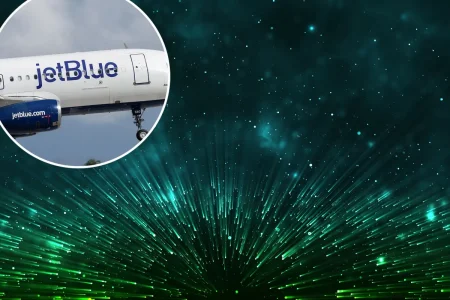The Changing Landscape of Ski Culture: From Accessibility to Luxury
After 17 years of loyal patronage to Revelstoke Mountain Resort in British Columbia, Emma Mains has made the difficult decision to forgo her annual ski pass this season. With early-bird pricing around $1,600 and regular rates now hitting $2,200—not to mention day tickets at $200—Mains simply couldn’t justify the expense. “I’ll be touring and Nordic skiing [outside the resort] this year,” she explains, representing a growing sentiment among longtime ski enthusiasts. This trend extends far beyond Canadian borders, as locals across North America are quietly stepping away from resorts due to soaring costs. Mike Akerman, who for eight years divided his time between Provincetown, Massachusetts in summer and Park City, Utah in winter, has abandoned his winter routine entirely. The economics simply don’t work anymore: “When I got my first pass, I paid less than $400, and now it’s over $800,” Akerman notes, adding that his rent skyrocketed from $900 to over $3,000. The situation has become so extreme that, according to Akerman, “There are very few people in the ski industry who live in ski towns anymore.”
The transformation of skiing from an accessible outdoor pastime to a luxury experience is striking when considering the numbers. At premier mountain resorts, day tickets are expected to exceed $300 this winter, with corresponding increases in lodging and food costs. A family of four can easily spend $1,200 for a single day on the slopes once equipment rentals, meals, and parking are factored in. This represents a dramatic shift for a sport that originated with humble rope tows, parking lot picnics, and thermoses of hot coffee. The financial barrier has fundamentally changed the character of American skiing, turning what was once a relatively accessible winter activity into an exclusive luxury pursuit reserved primarily for the affluent. The economic divide has become increasingly apparent, separating those who can afford the mounting costs from those who are being priced out of a sport they once loved.
Paradoxically, despite becoming less accessible to many longtime enthusiasts and locals, skiing has never been more popular as an industry. According to the National Ski Areas Association, U.S. skier visits have reached record highs in seven of the past ten years. As Stuart James Winchester explains, “Skiing has flipped its business model. It used to be expensive season passes and cheap day tickets. Now, it’s cheap season passes for frequent skiers and eye-watering prices for anyone who walks up.” This paradigm shift heavily favors those with the financial means to travel between multiple resorts throughout the season. Multi-mountain pass products like Vail Resorts’ Epic Pass and Alterra Mountain Company’s Ikon Pass cater to wealthy ski tourists who can afford to chase the best conditions across different mountains. Meanwhile, locals who might only manage occasional impromptu ski days when conditions are optimal face punishing day rates. At Steamboat, Colorado, for instance, the same-day pass that cost $165 during the 2017-2018 season now commands $329—a nearly 100% increase in just a few years.
Some major resort operators appear to recognize they may have pushed pricing too far. Vail Resorts, which operates over 40 resorts worldwide, has introduced new Epic Friend Tickets allowing pass holders to share 50%-off vouchers with friends. Competitor Alterra quickly followed with a similar program. However, these gestures may be too little too late for many skiers who are exploring alternatives. Trip designer Meg Nolan of Friend of a Friend Consulting has observed a significant shift in client preferences: “People are really considering Europe more. The difference in cost is so significant that even with the flights, it makes sense.” The economics are compelling—Nolan notes that a family can experience world-class European destinations like Les Trois Vallées or Zermatt for approximately 40% less than comparable American resorts. “I can take my kids to Switzerland, ski into Italy for lunch and still spend less than a week in Aspen,” she remarks. This international shift represents not just a search for better value, but perhaps also a rejection of the increasingly corporate and exclusive nature of American ski culture.
Amid the industry-wide trend toward luxury pricing, a countermovement is emerging among smaller, independent mountains, many of which remain family-operated. These resorts are working diligently to maintain skiing’s accessibility and preserve its cultural heritage. Pleasant Mountain in Maine exemplifies this approach, offering day tickets for around $50 and never exceeding $91, even during peak weekends. The mountain further serves its community with $24 illuminated night skiing every Monday. In New Hampshire, Storrs Hill—a historic ski area established in 1923—offers free skiing through a local foundation’s support. Idaho’s Tamarack Resort has managed to hold the line on pricing despite a recent $200 million investment in infrastructure improvements: adult season passes start at $599, children can ski all season for just $29, and day tickets remain under $200. These figures stand in stark contrast to elite destinations like Aspen, where top-tier season passes exceed $3,000. Even comparable mountains demonstrate the pricing disparity: Whitefish Mountain Resort in Montana, similar in size to Breckenridge, Colorado, maintains lift tickets around $115, while Breckenridge charges $289 for a single day.
Winchester offers practical advice for skiers feeling the financial squeeze: “Stop going to the same 30 places everyone else is going. Stowe, Vail, Aspen, Park City—they’ll always be there. But if you get a little creative, there are still tons of independent operations with reasonable prices and great snow.” This approach may require sacrificing some social media cachet—”You might not get the bragging power of posting from Aspen”—but offers substantial rewards: shorter lift lines, better ski experiences, and significantly lower costs. The future of skiing appears to be diverging along two distinct paths: the increasingly exclusive luxury experience offered by major corporate resorts, and a more traditional, accessible version preserved by independent operations. For dedicated skiers like Emma Mains who are unwilling or unable to pay premium prices, alternative approaches like backcountry touring, Nordic skiing, or seeking out smaller mountains represent not just economic necessity, but perhaps a return to the sport’s more authentic roots. As the industry continues to evolve, the question remains whether skiing will maintain its cultural significance as a winter activity enjoyed across economic strata, or whether it will complete its transformation into an exclusive luxury pursuit.















